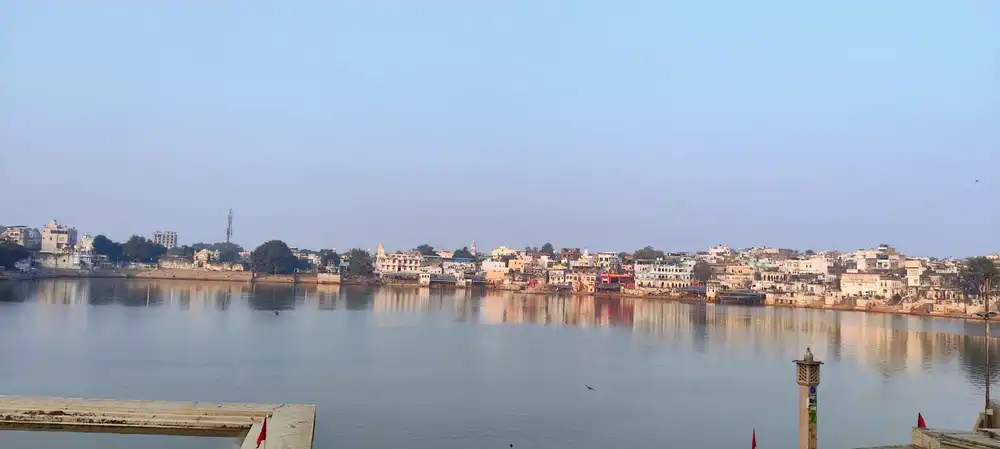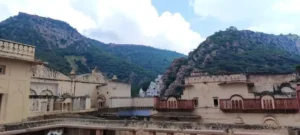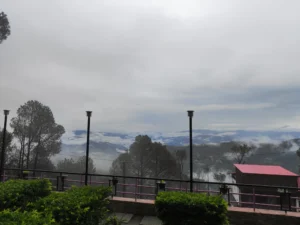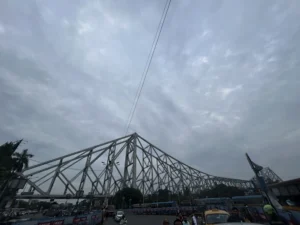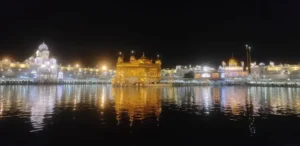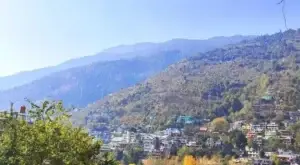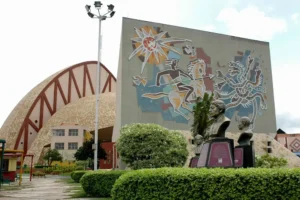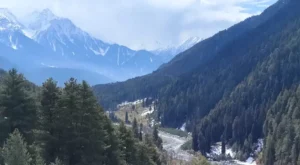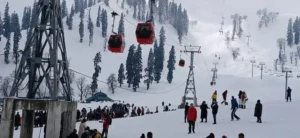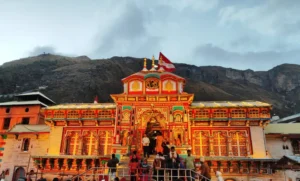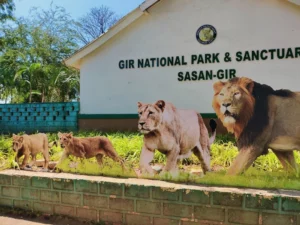Nestled in the heart of Rajasthan, Pushkar and Ajmer are two enchanting destinations that offer a unique mix of spirituality, history, and culture. Pushkar boasts a sacred lake, vibrant bazaars, and the world’s only Brahma Temple, while Ajmer attracts visitors with the Ajmer Sharif Dargah, historic forts, and Mughal-era architecture. Whether you seek divine blessings, a taste of Rajasthani culture, or a peaceful getaway, these twin cities have something for every traveler. Here’s a perfect itinerary to explore the best of Pushkar and Ajmer!
Best Time to Visit:
October – November: Pleasant weather with temperatures ranging from 15°C to 30°C. The famous Pushkar Camel Fair takes place in early November (around Kartik Purnima), making it the most vibrant and culturally rich time to visit.
December – February: Cool winter months with temperatures between 5°C and 25°C, making it the best time for exploring temples, forts, and local markets.
March: The transition to summer begins, with temperatures ranging from 15°C to 32°C, but early March is still comfortable for travel.
Avoid visiting in peak summer (April – June) as Rajasthan experiences extreme heat, with temperatures soaring above 40°C (104°F).
Monsoon (July – September) with temperatures between 20°C and 35°C, brings some relief but can make sightseeing inconvenient.
Tourist Attractions in Pushkar:
Brahma Temple
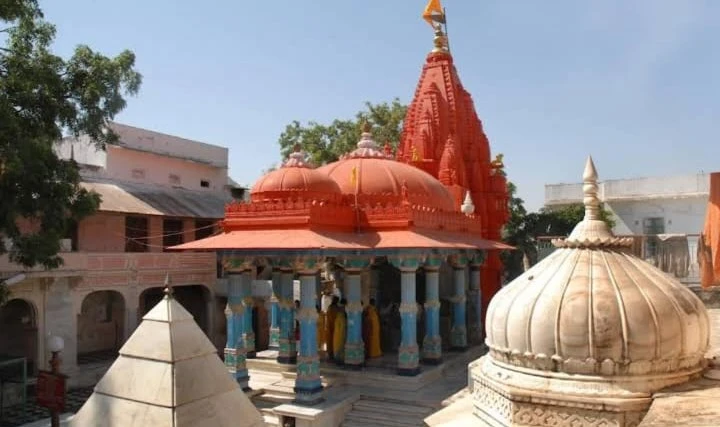
The Brahma Temple in Pushkar is one of the most sacred and rare temples dedicated to Lord Brahma, the Hindu creator deity. The temple dates back to the 14th century, but historians believe its original construction took place over 2,000 years ago. According to Hindu mythology, Lord Brahma performed a yajna (sacred ritual) at Pushkar, making the town spiritually significant. The temple’s red spire (shikhara) and the sacred silver turtle at its entrance symbolize its divine importance. The idol of Lord Brahma is made of marble and depicts him with four faces.
Timings: 6:00 AM – 8:00 PM
Morning Aarti: 5:30 AM – 6:00 AM. Evening Aarti: 6:00 PM – 6:30 PM
Kartik Poornima (Full Moon in October-November) is the most significant time to visit, coinciding with the Pushkar Camel Fair.
Footwear is not allowed inside the temple. Photography is restricted inside the sanctum.
Pushkar Lake
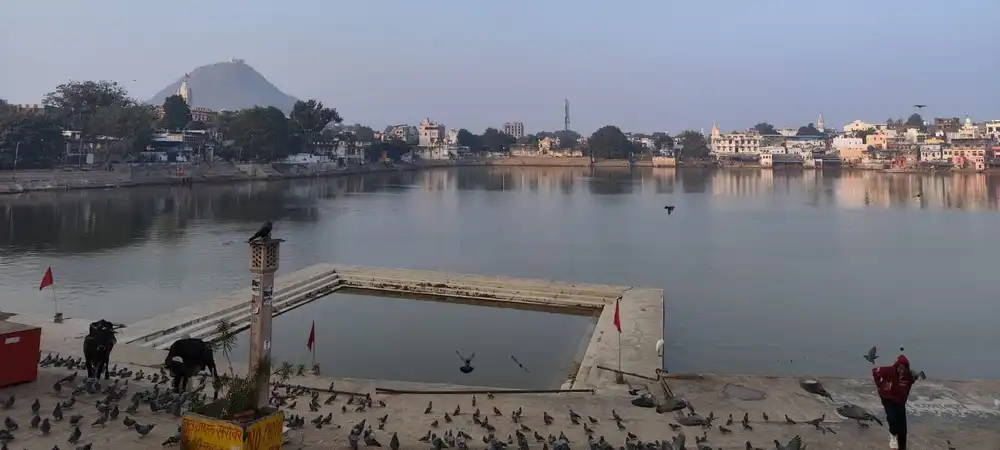
Pushkar Lake is one of the holiest lakes in India, located in the heart of Pushkar, Rajasthan. Surrounded by 52 ghats (bathing steps) and over 500 temples, this lake holds immense religious significance for Hindus. Devotees believe that taking a dip in the sacred waters of Pushkar Lake during Kartik Purnima (full moon in October-November) washes away sins and grants salvation (moksha).
According to Hindu mythology, Lord Brahma formed the lake by dropping a lotus flower on the earth. The place where the lotus fell became Pushkar Lake, making it a revered pilgrimage site.
Visit in the evening to witness the breathtaking sunset and the mesmerizing aarti ceremony at the ghats. However, it is advisable to maintain a respectful distance from the water during the aarti, as locals consider it especially sacred at that time.
Savitri Temple
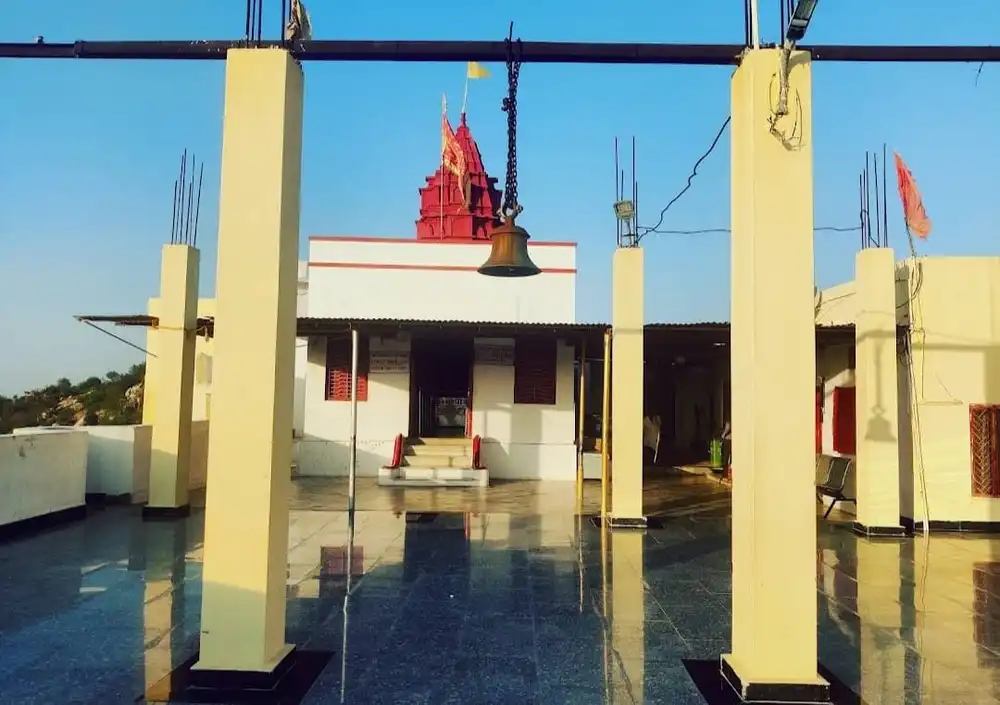
The Savitri Temple sits atop Ratnagiri Hill and honors Goddess Savitri, the consort of Lord Brahma. According to Hindu mythology, Goddess Savitri left Lord Brahma and retreated to this hill in anger after he married Goddess Gayatri during a sacred ritual. As a result, devotees consider the temple an important shrine for seeking blessings for marital harmony and prosperity.
One can take a 30–45 minute uphill trek with around 200–300 steps leading to the temple. Alternatively, you can ride a cable car, for a quick and scenic ascent.
Temple Timings: 5:00 AM – 12:00 PM & 4:00 PM – 9:00 PM
Ropeway operates daily from 8:00 AM to 7:00 PM. Please note that operating hours may vary based on weather conditions and seasonal changes.
Ticket price: ₹165 per person (round trip) (Adults and Children above 3 years), ₹125 per person (Specially-abled Persons)
Rangji Temple
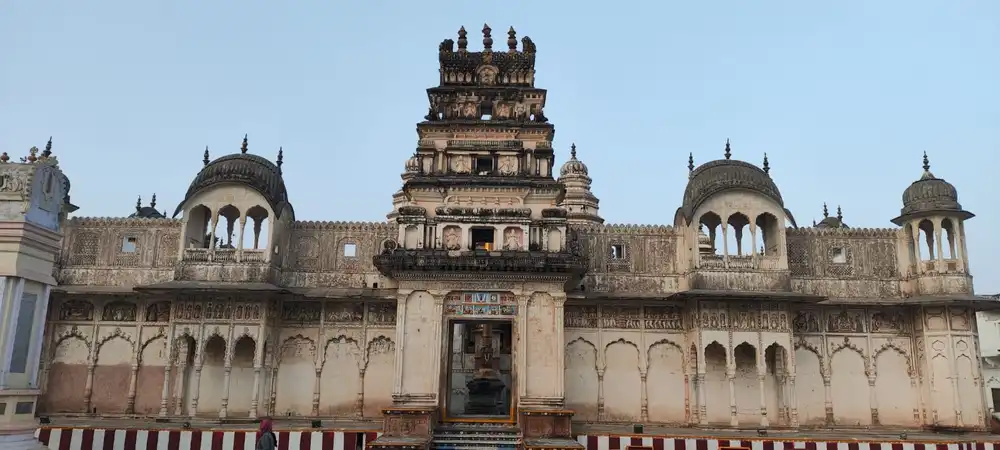
Lord Rangji is believed to be an incarnation of Lord Vishnu. The temple is built in the South Indian Dravidian style, with a large gopuram (ornate entrance tower). Seth Puran Mal Ganeriwal of Hyderabad built the temple in 1823 and is one of the newer temples in Pushkar. Unlike other temples in Rajasthan, this temple follows South Indian temple customs and rituals, including daily poojas and processions.
Temple Timings:
Morning: 6:00 AM – 12:00 PM
Evening: 3:00 PM – 7:00 PM
Ajmer tourist spots:
Ajmer Sharif Dargah

The Ajmer Sharif Dargah stands as one of India’s most revered Sufi shrines, serving as the sacred resting place of Khwaja Moinuddin Chishti, a highly esteemed Sufi saint who spread the message of love, peace, and humanity. The shrine’s majestic Buland Darwaza, a grand entrance gate, was built by the Mughals, adding to its historical significance. Within the dargah complex lies the magnificent Shah Jahan’s Mosque, a stunning structure crafted from white marble.
Evenings at the dargah come alive with soul-stirring Sufi qawwalis, performed daily in the courtyard from 6:00 PM onwards.
Devotees from across the world gather to celebrate the Urs Festival during the Islamic month of Rajab (7th month), commemorating the anniversary of Khwaja Moinuddin Chishti.
Timings: 4:00 AM – 10:00 PM (April – October), 5:00 AM – 9:00 PM (November – March)
One can offer a Chadar (shawl) & flowers as a mark of respect. Beware of local guides charging extra money.
Adhai Din Ka Jhopra
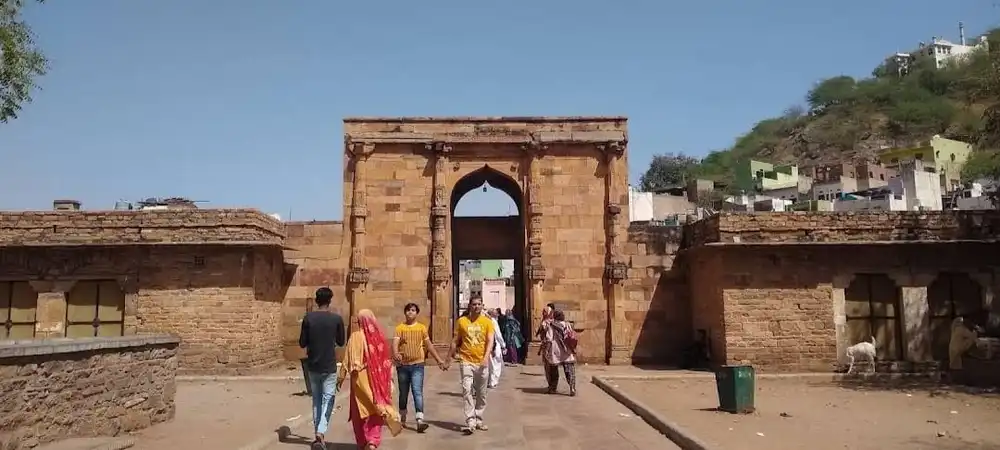
Adhai Din Ka Jhopra is an extraordinary example of Indo-Islamic architecture. Originally built as a Sanskrit college during the 12th century, Sultan Qutb-ud-din Aibak converted the structure into a mosque in 1199 AD after conquering Ajmer. The name, meaning “shed of two and a half days,” likely refers to the time taken to build it.
The mosque retains elements of the original Hindu and Jain temples, evident in its intricately carved pillars, domes, and arches. Arabic inscriptions and Quranic verses adorn the walls. The grand arched screens at the entrance showcase early Islamic architectural influence in India.
Timings: 6:00 AM – 6:00 PM.
Entry Fee: Free
You can walk or take a local auto since the streets are narrow and may not allow private cars.
Akbari Fort & Museum
It is a stunning historical monument that once served as the residence of Emperor Akbar during his visits to Ajmer. Akbar built this fort in 1570 AD and used it as his administrative headquarters in Ajmer. The fort stands out for its architectural grandeur and rich collection of artifacts. Today, it houses a museum showcasing a fascinating mix of Mughal and Rajput relics, sculptures, paintings, and inscriptions.
Timings: 10:00 AM – 5:00 PM (Closed on Mondays)
Entry Fee: ₹10 (Indians), ₹50 (Foreigners), ₹5 (Students)
Soni Ji Ki Nasiyan Jain Temple
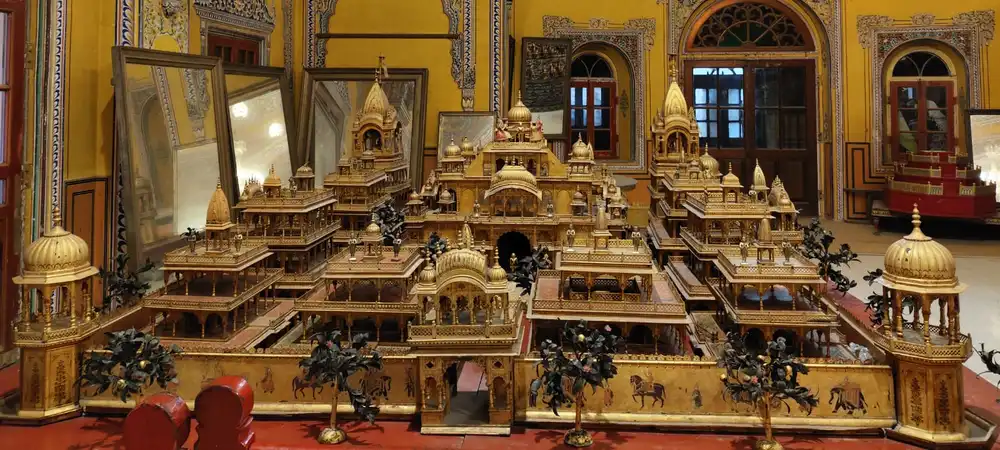
Soni Ji Ki Nasiyan, also known as Ajmer Jain Temple, is a stunning Jain temple, dedicated to Lord Rishabhdev (Adinath), the first Tirthankara of Jainism. The temple was built in 1865 by Seth Moolchand Soni, a wealthy Jain merchant. This temple is famous for its Swarn Nagri (City of Gold) Hall, which contains an extravagant display of gold-plated wooden figures depicting Jain mythology. The temple features stunning red sandstone work on the exterior and detailed marble carvings inside. The sanctum (Garbhagriha) houses an idol of Lord Rishabhdev, made of pure marble. The temple reflects the rich traditions and beliefs of the Digambar Jain sect.
Timings:
Monday to Sunday: 8:30 AM – 4:30 PM
Ticket Price:
Entry Fee: ₹10 – ₹20 per person
Camera Charges: Additional ₹10 – ₹50 (depending on the type of camera)
Ana Sagar Lake
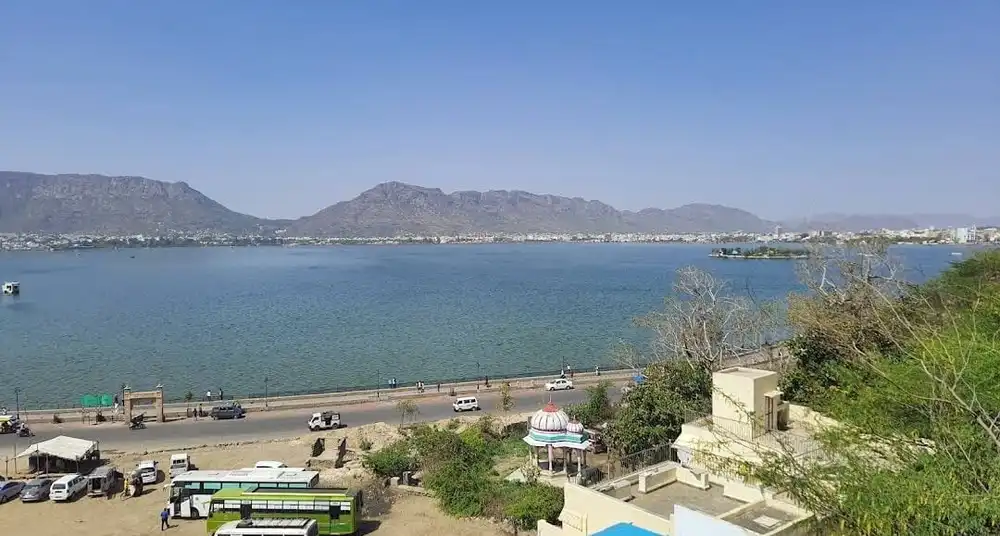
Ana Sagar Lake, a picturesque artificial lake in Ajmer, is a popular spot for both tourists and locals. King Anaji (grandfather of Prithviraj Chauhan) built the lake in the 12th century (1135–1150 AD). Spanning 13 km², it offers breathtaking views, especially at sunrise and sunset.
You can visit Daulat Bagh Gardens, lush green gardens built by Emperor Jahangir, perfect for a peaceful stroll. Baradari Pavilions are beautiful marble pavilions built by Shah Jahan, which adds Mughal charm to the lakefront.
One can enjoy Boating or Paddle Rides. Charges: Approx. ₹100-₹300 per ride (varies by type)
Taragarh Fort
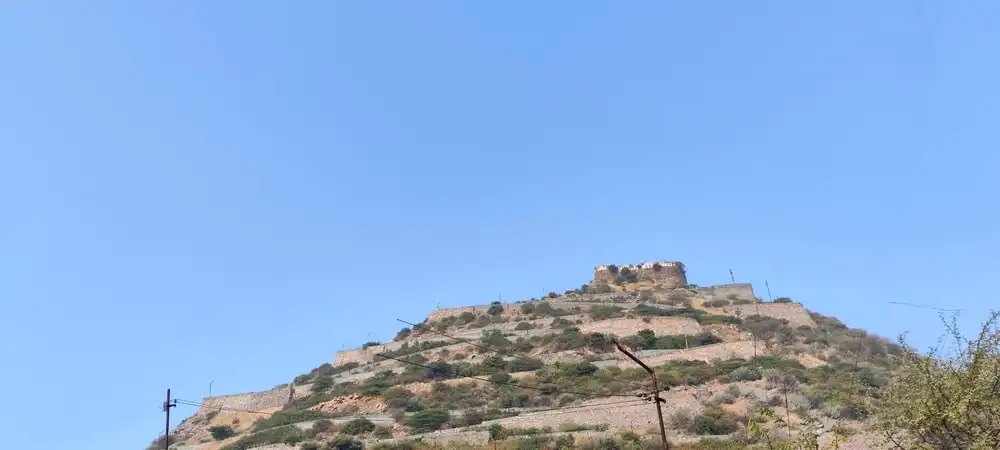
Perched on a steep hilltop in Ajmer, Taragarh Fort is an ancient structure known for its grandeur, strategic significance, and breathtaking panoramic views. Built in 1033 AD by the Chauhan dynasty, this fort was a crucial military stronghold and later served as a key defense post during the Mughal and British eras. The fort’s massive gateways, stone walls, and underground tunnels highlight its military brilliance. A giant bastion houses the famous Garbh Gunjam cannon, one of the largest in India. There is a tomb which serves as the resting place of a brave governor Miran Saheb, who defended the fort. There is a mosque, adjacent to the tomb.
One can visit the Taragarh Fort to enjoy sunset and get a panaromic view of Ajmer city. There is nothing else to visit other than the mosque.
Conclusion
Pushkar and Ajmer, two contrasting yet complementary destinations, offer a perfect blend of spirituality, history, and culture. While Pushkar enchants visitors with its serene lake, ancient temples, and vibrant bazaars, Ajmer stands as a symbol of faith and harmony with the revered Ajmer Sharif Dargah and stunning historical sites. Whether you seek divine blessings, architectural wonders, or a peaceful retreat, these cities promise an unforgettable experience. A visit to Pushkar and Ajmer is not just a journey through Rajasthan but a soulful exploration of India’s rich heritage.
